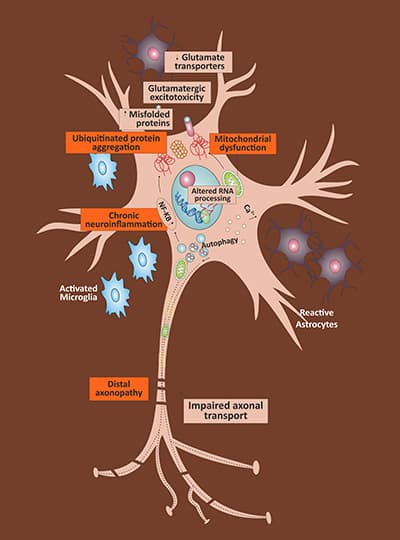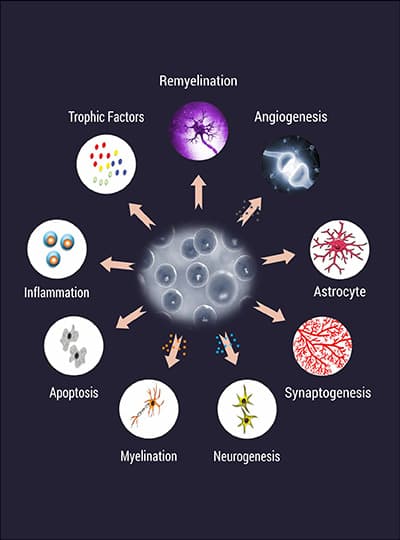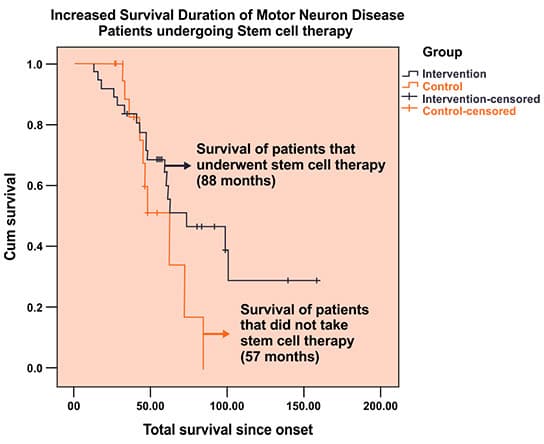The term motor neuron disease encompasses different disorders. These disorders are classified based on the kind of neurons that are damaged i.e upper motor neurons or lower motor neurons and the progression of the disease. Some of the additional motor neuron diseases comprises of post-polio syndrome, primary lateral sclerosis (PLS), progressive bulbar palsy and progressive muscular atrophy. The diseases that come under the group of motor neuron disease are:
Motor neuron disease encompasses disorders that are classified based on the kind of neurons that are damaged i.e upper motor neurons or lower motor neurons and the progression of the disease. Some of the additional motor neuron diseases comprises of post-polio syndrome, primary lateral sclerosis (PLS), progressive bulbar palsy and progressive muscular atrophy. The diseases that come under the group of motor neuron disease are:
The most commonly witnessed motor neuron disease is better known by the term amyotrophic lateral sclerosis (ALS). It is one of the faster progressing MNDs.
PLS is characterised by an upper motor neuron affection
It affects both upper and lower motor neurons and starts with speech and swallowing affections.
In PMA, the lower motor neurons are affected. PMA also has a comparatively slower rate of deterioration.
Kennedy disease presents as an MND, however, is a hereditary condition which affects adult males causing slowly progressive weakness and wasting of muscles with only lower motor neuron involvement and other features.
Hirayama disease, also known as monomelic amyotrophy (MMA). It is known to be a rare cervical myelopathy that manifests itself as a self-limited, asymmetrical, slowly progressive atrophic weakness of the forearms and hands predominantly in young males.
As MND progresses, the symptoms of motor neuron disease start to differ. This symptomatic progression is marked by an outline that is divided into three categories namely:
| 1. INITIAL STAGE | 2. ADVANCED STAGE | 3. END STAGE |
|---|---|---|
|
Wasting/ thinning of muscles which gives a hollow appearance to the body contours, like flattening of shoulders, hollowness below clavicles and flattening of hand prominences Speech disturbances As the disease progresses to the neck and bulbar region, speech difficulties begin, which may feel as an additional effort being taken while talking, to slurring of speech and eventually lead to complete loss of useful speech. Fine motor impairment loss of ability to use fingers to perform tasks of precision like writing, buttoning etc. foot drop due muscle weakness feet become flail and floppy and drop down while walking making it difficult to walk. Emotional disturbances (Uncontrolled emotions like laughing fits, crying spells, temper tantrums Neck drop occurs due to weakness of the neck extensors, thus, making it difficult for them to hold their neck up even for a few seconds. Drooling, due to weakness of oral muscles, there may be drooling of saliva. Swallowing difficulty as the bulbar muscle weakness progresses. Initially it starts as coughing while drinking liquids and subsequently progresses with difficulty of swallowing solid as well as liquids and eventually causing inability to swallow. Inability to perform rapid eye movements Facial muscle weakness as though the muscles of the face are drooping. Orthopnoea: Difficulty breathing while sleeping in supine position. Dyspnea: Difficulty in breathing while performing day to day tasks. Respiratory weakness leading to dependendency on artificial ventilatory systems. |
|

The picture remains unclear on why motor neurons lose out on their functionality. Most motor neuron diseases are hereditary. In fact many researchers hold the belief that the rise of motor neuron diseases is a part of gene transmutation and have an effect on the normal functioning of cells. These transmittable forms of amyotrophic lateral sclerosis occur due to the transformation that takes place in the SOD1 gene, which keeps away the cells of the body from oxidative injury.
At present, some studies are made on levels of motor neuron disease progression like ALS. Some of these factors are mentioned below:
When there is an odd rise in the chemical levels like glutamate which normally transmits the communication through the nerves
When the immune system comes under some disturbance due to the malfunction of the immune system, it might cause a nerve disorder. This in turn will generate muscle weakness.
Uncertain environmental conditions like infections, toxic substances and dietary insufficiency may give rise.
The term motor neuron disease encompasses different disorders. These disorders are classified based on the kind of neurons that are damaged i.e upper motor neurons or lower motor neurons and the progression of the disease. Some of the additional motor neuron diseases comprises of post-polio syndrome, primary lateral sclerosis (PLS), progressive bulbar palsy and progressive muscular atrophy. The diseases that come under the group of motor neuron disease are:
Motor neuron disease encompasses disorders that are classified based on the kind of neurons that are damaged i.e upper motor neurons or lower motor neurons and the progression of the disease. Some of the additional motor neuron diseases comprises of post-polio syndrome, primary lateral sclerosis (PLS), progressive bulbar palsy and progressive muscular atrophy. The diseases that come under the group of motor neuron disease are:
The most commonly witnessed motor neuron disease is better known by the term amyotrophic lateral sclerosis (ALS). It is one of the faster progressing MNDs.
PLS is characterised by an upper motor neuron affection
It affects both upper and lower motor neurons and starts with speech and swallowing affections.
In PMA, the lower motor neurons are affected. PMA also has a comparatively slower rate of deterioration.
Kennedy disease presents as an MND, however, is a hereditary condition which affects adult males causing slowly progressive weakness and wasting of muscles with only lower motor neuron involvement and other features.
Hirayama disease, also known as monomelic amyotrophy (MMA). It is known to be a rare cervical myelopathy that manifests itself as a self-limited, asymmetrical, slowly progressive atrophic weakness of the forearms and hands predominantly in young males.
As MND progresses, the symptoms of motor neuron disease start to differ. This symptomatic progression is marked by an outline that is divided into three categories namely:
| 1. INITIAL STAGE | 2. ADVANCED STAGE | 3. END STAGE |
|---|---|---|
During this stage, the symptoms starts developing in a slow faint manner. |
Wasting/ thinning of muscles which gives a hollow appearance to the body contours, like flattening of shoulders, hollowness below clavicles and flattening of hand prominences Speech disturbances As the disease progresses to the neck and bulbar region, speech difficulties begin, which may feel as an additional effort being taken while talking, to slurring of speech and eventually lead to complete loss of useful speech. Fine motor impairment loss of ability to use fingers to perform tasks of precision like writing, buttoning etc. foot drop due muscle weakness feet become flail and floppy and drop down while walking making it difficult to walk. Emotional disturbances (Uncontrolled emotions like laughing fits, crying spells, temper tantrums Neck drop occurs due to weakness of the neck extensors, thus, making it difficult for them to hold their neck up even for a few seconds. Drooling, due to weakness of oral muscles, there may be drooling of saliva. Swallowing difficulty as the bulbar muscle weakness progresses. Initially it starts as coughing while drinking liquids and subsequently progresses with difficulty of swallowing solid as well as liquids and eventually causing inability to swallow. Inability to perform rapid eye movements Facial muscle weakness as though the muscles of the face are drooping. Orthopnoea: Difficulty breathing while sleeping in supine position. Dyspnea: Difficulty in breathing while performing day to day tasks. Respiratory weakness leading to dependendency on artificial ventilatory systems. |
During this stage, one experiences body paralysis, severely affecting daily activities and shortness of breath. |

The picture remains unclear on why motor neurons lose out on their functionality. Most motor neuron diseases are hereditary. In fact many researchers hold the belief that the rise of motor neuron diseases is a part of gene transmutation and have an effect on the normal functioning of cells. These transmittable forms of amyotrophic lateral sclerosis occur due to the transformation that takes place in the SOD1 gene, which keeps away the cells of the body from oxidative injury.
At present, some studies are made on levels of motor neuron disease progression like ALS. Some of these factors are mentioned below:
When there is an odd rise in the chemical levels like glutamate which normally transmits the communication through the nerves
When the immune system comes under some disturbance due to the malfunction of the immune system, it might cause a nerve disorder. This in turn will generate muscle weakness.
Uncertain environmental conditions like infections, toxic substances and dietary insufficiency may give rise.
At present, there is no indication of any cure for motor neuron disease. However, there are some interventional approaches which are currently being advised for patients with MND to prolong independence.
Physiotherapist
A physiotherapist can guide one through the mobility, postural support and contractures issues.
Speech and language therapist
For any problems related to difficulty in swallowing & speech difficulties, a speech therapist can provide exercises.
Occupational therapist
An occupational therapist can supply some aids to sustain the functionality like providing wheelchair, mobile arm support and so on.
Dietitian
Your diet regime gets corrected in accordance with your treatment options through their help.
There are certain medications that help to lessen the rise of these symptoms. It includes medications like muscle relaxants, anticonvulsants, non-steroidal anti-inflammatory drugs and other available drugs. At present, a normal drug called rilutor is used widely. Additionally, the patients are provided with assistive devices such as supports or braces, orthotics, speech synthesizers, and wheelchairs to help them in letting go of their dependency. In an advanced stage, usage of an artificial ventilator support may become necessary.

Autologous Bone Marrow Mononuclear Cells Grafting bone marrow-derived cells can partake the below pointers during a session of autologous bone marrow mononuclear cells grafting for motor neuron disease treatment in India:
- The bone marrow-derived cells are relocated after it separates into a different entity of neural cells that facilitates in repairing tissues
- An alternative to cells results in the generation of bone marrow-derived cells
- It boosts up the total number of cells
- It gives an improved living habitat for the continued existence of motor neurons
- Motor neuron cells are better augmented for protection and it also transmits some molecules that act as carriers
When there is an increased axonal deterioration of motor neurons taking place in the spinal cord and motor cortex, it leads to a formation of motor neuron disease. The motor neurons get hampered through this disease progression leaving aside the sensory system. Cells such as glial cells and bone marrow-derived cells showcase a dimensional role in renewing the lost motor neurons. Renewing of neurons can be obtained through a latent supply of bone marrow cells. It includes both hematopoietic as well as mesenchymal progenitor cells and it can transfer itself to the spinal cord and infuse effectively in the motor neuron disease region.
It has constantly been proven that cellular therapy is a safe treatment for motor neuron disease treatment in India and been used extensively.
The smartest running policy for motor neuron disease is an outcome of cellular transplantation. Few studies for motor neuron disease treatment in India have proved to be beneficiary in the running of motor functioning. This has been proven in preclinical studies related to animals. Safety measures and transplantation options are further researched for better optimization, but the use of autologous bone marrow-derived cells have been proven to be safe while allogeneic cell transplantation safety measures are still been studied. There is a wide intensive study going on regarding the several forms of cells, routes of administration and its different protocols. Quite a number of transplantation like intracerebral, intra-spinal and intrathecal takes place related to mononuclear cells and resulting from peripheral blood.

Autologous Bone Marrow Mononuclear Cells Grafting bone marrow-derived cells can partake the below pointers during a session of autologous bone marrow mononuclear cells grafting for motor neuron disease treatment in India:
- The bone marrow-derived cells are relocated after it separates into a different entity of neural cells that facilitates in repairing tissues
- An alternative to cells results in the generation of bone marrow-derived cells
- It boosts up the total number of cells
- It gives an improved living habitat for the continued existence of motor neurons
- Motor neuron cells are better augmented for protection and it also transmits some molecules that act as carriers
When there is an increased axonal deterioration of motor neurons taking place in the spinal cord and motor cortex, it leads to a formation of motor neuron disease. The motor neurons get hampered through this disease progression leaving aside the sensory system. Cells such as glial cells and bone marrow-derived cells showcase a dimensional role in renewing the lost motor neurons. Renewing of neurons can be obtained through a latent supply of bone marrow cells. It includes both hematopoietic as well as mesenchymal progenitor cells and it can transfer itself to the spinal cord and infuse effectively in the motor neuron disease region.
It has constantly been proven that cellular therapy is a safe treatment for motor neuron disease treatment in India and been used extensively.
The smartest running policy for motor neuron disease is an outcome of cellular transplantation. Few studies for motor neuron disease treatment in India have proved to be beneficiary in the running of motor functioning. This has been proven in preclinical studies related to animals. Safety measures and transplantation options are further researched for better optimization, but the use of autologous bone marrow-derived cells have been proven to be safe while allogeneic cell transplantation safety measures are still been studied. There is a wide intensive study going on regarding the several forms of cells, routes of administration and its different protocols. Quite a number of transplantation like intracerebral, intra-spinal and intrathecal takes place related to mononuclear cells and resulting from peripheral blood.
Survival
Respiratory function
Muscle strength
Bulbar impairment
In a subpopulation of 100,000 people, 1-5 people are stricken with motor neuron disease. It does not hamper the life of the sufferer alone but it also affects the lives of their loved ones. With the discovery of autologous bone marrow mononuclear cells grafting, the hope of people is renewed.
After the autologous bone marrow mononuclear cells grafting for motor neuron disease treatment in India, many of our patients have shown positive results like:
Clearer and louder speech
Better tongue movement
Less frequent choking
Improvement during swallowing
Lesser drooling of saliva
Improved neck control
Better limb functioning
Fine motor activities
Improved sitting and standing balance
More independence
We evaluated the period of survival of the motor neuron disease patients treated with intrathecal autologous cell transplantation. We made a research through Kaplan-Meier survival analysis. It revealed that the chance of the survival period of the patients treated with intrathecal autologous cell transplantation was better compared with those patients who did not undergo autologous bone marrow mononuclear cells grafting for motor neuron disease in India.

Motor neuron diseases are a set of serious neurological disorders that increasingly damages the nerve cells. When the motor neuron cells are damaged by a motor neuron disease, the muscles cannot obtain the brain’s messages and results in muscle weakness
Currently there is no cure or standard treatment for motor neuron diseases. Medications such as muscle relaxants, anticonvulsants, non steroidal anti inflammatory drugs and other available drugs help by reducing the occurrence of the symptoms. The standard drug that is currently being used for motor neuron disease is rilutor.
People with motor neuron disease and their caretakers have complex needs which can adequately be delivered by a multidisciplinary team experienced in the management of progressive neurological disability.
Yes, a medicine named Rilutor is commonly prescribed to treat MND, however, it should only be taken after consulting your physician.
Yes, the symptoms include the initial stages, the advanced stage and the end stage. Each stage has different stages of symptoms.
The biological task of bone marrow-derived cells is to repair and regenerate damaged cells. autologous bone marrow mononuclear cells grafting for motor neuron disease exploits this function by administering these cells in high concentrations directly in and around the damaged tissue, where they advance its self healing and repair.
There are no ethical concerns as such that surrounds the adult autologous bone marrow mononuclear cells grafting for motor neuron disease and research. Ethical concerns are mainly based on the use of embryonic bone marrow-derived cells which we do not use.
The whole autologous bone marrow mononuclear cells grafting for motor neuron disease is safe and till date none of our patients have shown any signs of neurological deterioration. In rare cases, side effects like headache for 3-4 days, neck or back pain, vomiting, mild rash or pain at the area of bone marrow aspirations may arise. Some unexpected medical complications can occur but that is just a possibility.
This may vary from patient to patient. Some patients makes a speedy improvement by 3-6 months of cell treatment for motor neuron disease while in some cases patients take several months or years together to heal. And there are some patients that recover even before their discharge
We will have to review the entire dose of medication before coming upon a decision. Generally we do allow the patients to continue their other medication even after autologous bone marrow mononuclear cells grafting for motor neuron disease in India. But it is better to consult a doctor beforehand.
Since autologous bone marrow mononuclear cells grafting for motor neuron disease treatment in India is a new therapy and not an existing one, it is difficult to say. It will depend on several factors like the age of patient, type of illness, duration of illness and extent of rehabilitation taken after the treatment.
CASE REPORT 1
Lorem ipsum dolor sit amet, consectetur adipiscing elit. Nulla feugiat suscipit nisi, ac interdum magna. Nunc risus augue, pretium in erat eu, gravida vehicula ante. Ut condimentum mauris ex, non auctor lectus commodo...
CASE REPORT 2
Lorem ipsum dolor sit amet, consectetur adipiscing elit. Nulla feugiat suscipit nisi, ac interdum magna. Nunc risus augue, pretium in erat eu, gravida vehicula ante. Ut condimentum mauris ex, non auctor lectus commodo...
Motor neuron diseases are a set of serious neurological disorders that increasingly damages the nerve cells. When the motor neuron cells are damaged by a motor neuron disease, the muscles cannot obtain the brain’s messages and results in muscle weakness
Currently there is no cure or standard treatment for motor neuron diseases. Medications such as muscle relaxants, anticonvulsants, non steroidal anti inflammatory drugs and other available drugs help by reducing the occurrence of the symptoms. The standard drug that is currently being used for motor neuron disease is rilutor.
People with motor neuron disease and their caretakers have complex needs which can adequately be delivered by a multidisciplinary team experienced in the management of progressive neurological disability.
Yes, a medicine named Rilutor is commonly prescribed to treat MND, however, it should only be taken after consulting your physician.
Yes, the symptoms include the initial stages, the advanced stage and the end stage. Each stage has different stages of symptoms.
The biological task of bone marrow-derived cells is to repair and regenerate damaged cells. autologous bone marrow mononuclear cells grafting for motor neuron disease exploits this function by administering these cells in high concentrations directly in and around the damaged tissue, where they advance its self healing and repair.
There are no ethical concerns as such that surrounds the adult autologous bone marrow mononuclear cells grafting for motor neuron disease and research. Ethical concerns are mainly based on the use of embryonic bone marrow-derived cells which we do not use.
The whole autologous bone marrow mononuclear cells grafting for motor neuron disease is safe and till date none of our patients have shown any signs of neurological deterioration. In rare cases, side effects like headache for 3-4 days, neck or back pain, vomiting, mild rash or pain at the area of bone marrow aspirations may arise. Some unexpected medical complications can occur but that is just a possibility.
This may vary from patient to patient. Some patients makes a speedy improvement by 3-6 months of cell treatment for motor neuron disease while in some cases patients take several months or years together to heal. And there are some patients that recover even before their discharge
We will have to review the entire dose of medication before coming upon a decision. Generally we do allow the patients to continue their other medication even after autologous bone marrow mononuclear cells grafting for motor neuron disease in India. But it is better to consult a doctor beforehand.
Since autologous bone marrow mononuclear cells grafting for motor neuron disease treatment in India is a new therapy and not an existing one, it is difficult to say. It will depend on several factors like the age of patient, type of illness, duration of illness and extent of rehabilitation taken after the treatment.
